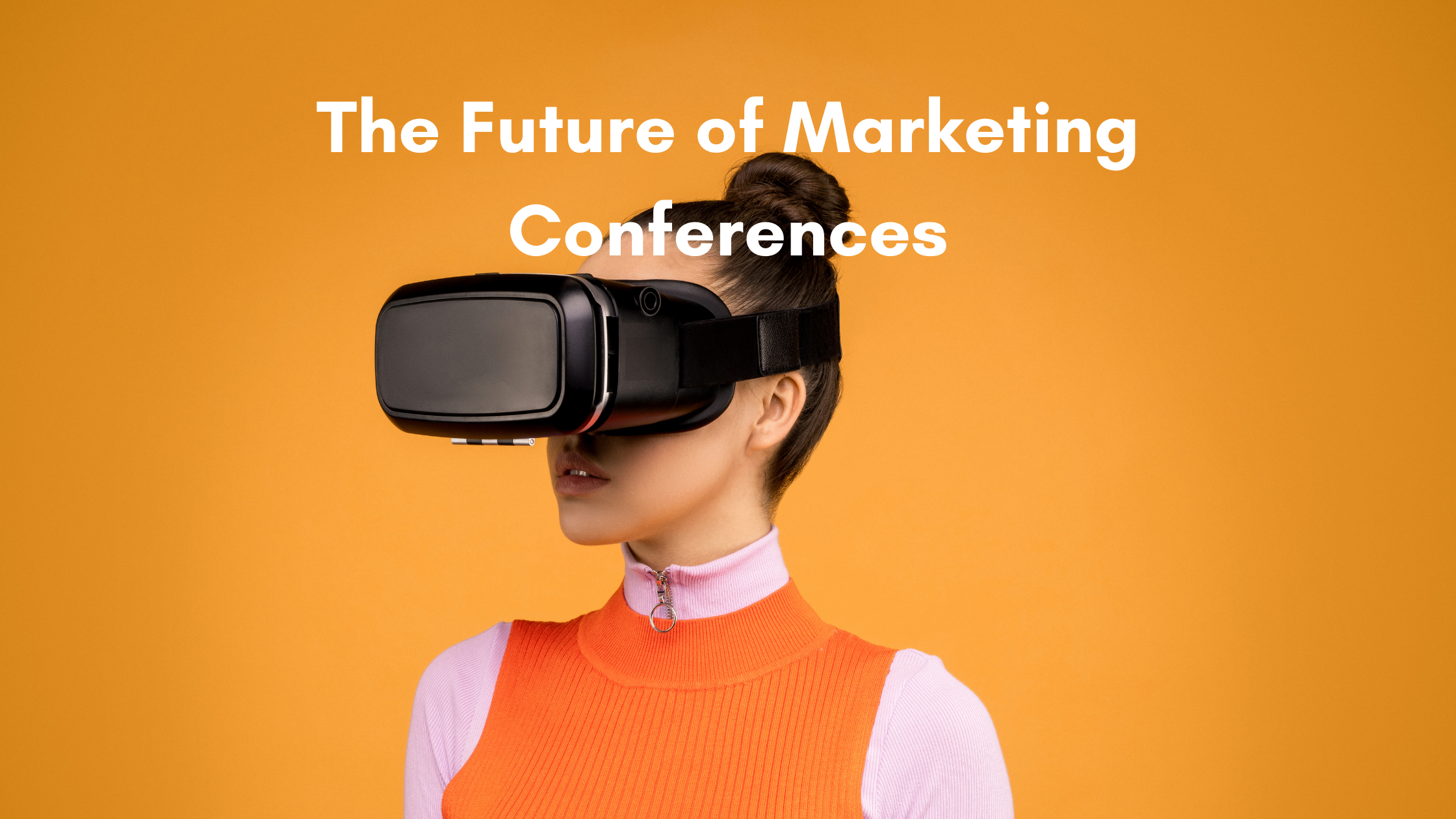We’re kicking off a new year that brings new challenges, but even more so, changes that make companies better and provide more value to target audiences. Perhaps the biggest change we’ll see is the shift in marketing conferences.
We don’t know how soon COVID-19 restrictions will ease, but what we do know is that even when life goes back to ‘business as usual’, marketing conferences will see a shift when compared to the glory days of in-person events that dominated up until the past year.
What we expect to see:
- Digital/virtual marketing conferences are here to stay
- In-person marketing events will ultimately come back, but not with the same force
- Companies will have to get more creative to drive attendance regardless of in-person or virtual marketing conferences
Let’s touch on these three predictions.
Virtual Marketing Conferences are Here to Stay
As the workforce has adopted remote-work, the importance of leveraging technology to reach customers has never been more important.
So as marketers scrambled from in-person events to virtual events, leading virtual conference companies like Hopin Official enabled a seamless transition to the adoption of digital events.
Traditionally, events are structured in a format where there are ‘sessions’ in each room, and then breakout sessions to further discuss the topic along with other events that facilitate discussion among peers.
To ensure that the virtual marketing conferences offer the same benefits, Hopin enabled a user interface that allows for discussion on the ride-hand side of each session, and then ‘breakout rooms’ for further collaboration.
Essentially the audience attending the virtual event was able to experience everything that traditional marketing events offer, just without the physical in-person interactions.
One of the biggest factors that virtual events brought to an organization that hosts events is time savings and efficiency.
The virtual events allowed employees to:
- Cut down on travel time
- Easily pop in and out of sessions based on what aligns with what you’d like to gain from the conference (with in-person events, peers often feel rude getting up and leaving)
- Still interact with peers and experience the networking capabilities that events usually bring
To further elaborate on efficiency, a lot of virtually run marketing events had speakers pre-record their sessions. This allows them to ensure that they hit every topic, and then engage with the audience while they’re watching the pre-recorded session.
Lastly, those that typically host events were able to realize the cost savings of a virtual event when compared to a physical event.
Physical events require:
- Travel expenses (meals, flights, gas, hotel)
- Physical giveaways (t-shirts, mugs, hats, etc.)
- Happy hours and coordinated dining sessions
- Entertainment (music, speakers, etc.)
That’s not to say that all of these cool features went away, but the travel expenses were completely eliminated and companies were able to allocate that budget to cool ‘swag’ that can be shipped to the attendees, or even send a 6-pack for a ‘virtual happy hour’.
In a time where so many people had to adapt, companies that were able to provide engaging virtual events to make the best of the changing times deserve a lot of credit.
In-Person Marketing Conferences
In person marketing events came to an abrupt halt in 2020 due to the Coronavirus. While we believe the in-person events still have a place in the marketing world once coronavirus is under control, it’s likely that we will see them pop up in a lesser capacity.
As we touched on earlier, virtual marketing conferences have provided access to a new world of increased efficiency and cost savings when it comes to putting together these events. What it doesn’t allow for is the human interaction and much of the networking that goes on at these events.
The networking and in person connections that you make at these events can help significantly with:
- Lead Generation
- Potential business partnerships
- Even just getting your businesses name out there at an event filled with like-minded individuals
In-Person Events and the Challenges Ahead
Over its lengthy history, in person events have proven to be a valuable tool for all of those involved, but with the realized benefits and continued growth of digital events, in person marketing events are going to need to continue to evolve.
In its current state, in person events are much more time consuming and cost more money and aren’t all that much more efficient. Now that more digital events have become more profound, new networking tools continue to be implemented that offer a more personal experience undermining the need for the in-person events (we’ll touch on that later).
In the end, nothing can replicate the desire for human interaction and meeting individuals in person and that’s why we continue to see the need for in person events. These events are going to need to become more personalized and really need to be seen as worth the time and cost investment for those attending.
A few ways we see the In Person events evolving:
- Engaging content
- Increased Personalization
- Hybrid Events
Speaking to each of those a little;
Engaging content will continue to be a priority for both in person and digital events. Digital events have the inherent benefit of being easier to attend but they also deal with attendees becoming more easily disinterested.
Engaging content at in-person events will be able to continue to attract attendees and provide an immersive experience and, hopefully, tangible benefit by the time the event has finished.
Increased Personalization, while already important, will continue to play an important role in driving attendance at in person events.
Targeting the correct demographic and personalizing your event toward that group will help provide value and keep the attendees coming. On a podcast in 2019, Colleen Bisconti, the Vice President of Global Conferences and Events at IBM, explained it well saying, “we created 30,000 attendee experiences versus one experience for 30,000 attendees.”
In the future, when we move toward a new normal, we could still see individuals who are less willing to spend time around large groups or more venues with capacity limits. With this comes Hybrid Events and their ability to provide something for everyone.
Those who want to attend in person and find the experience more beneficial can do that and those who may be trying to cut travel and event expenses, can still attend virtually. In the end, the event is still going to need to provide engaging content to both the in-person attendees and those online while still making it seem to each party that the event is personalized toward them. While it may seem like additional work to run two personalized events, it could very well lead to a significant increase in the number of attendees.
Creativity for the Future of Events
Regardless of whether you’re hosting physical or virtual marketing events in the future, marketers will have to continue to get creative in order to drive attendance and engagement.
With so many channels competing for your target audiences’ attention, creativity is key.
An example for each type of event:
For physical events, we’ve seen drones flying overhead with branded logos that periodically drop cool giveaways into the crowd.
For virtual events, we’ve seen large organizations tap members of the Hamilton Cast in sessions called ‘The Zoom Where it Happens’ as the form of entertainment for that day.
This type of creativity all starts with your communication to your target audience when informing them about an upcoming event, and will continue through the entirety of the event; Not by any means an easy challenge!
The Future of Marketing Conferences
It depends. We expect virtual marketing conferences to continue to increase in popularity due to the cost savings and efficiency that go along with them. That’s not to say that physical, in-person conferences won’t have their place in your marketing strategy.
These two types of conferences will complement one another well. If you’re able to provide your target audience a mixture of both, it allows them a mix so that they can attend whichever best meets their needs.
Not all budgets are the same. Some companies will be able to provide a combination of the two, while others will have to solely rely on virtual conferences to adhere to their budget.
Frankly, if you create entertaining and informative events that engage your audience, then it doesn’t matter whether the event is physical or virtual and you’ll win in the end.
Let us know how you’re incorporating marketing conferences into your overall strategy, or if you need some help driving demand to them.

Gary McConnell Co-founded Rubicom Digital in 2019 with a goal of providing digital marketing consulting services in the B2B space.
Gary continues to serve as the Marketing Director of a Data Center-focused IT Provider, VirtuIT Systems.

